Laboratory Services
In accomplish its mission, the Hydrographic Institute (IH) has specialized teams and accredited laboratory capacities to execute the main analyses used to characterize the marine environment. (Technical Annex)
Chemical analysis of the Chemical and Pollution of the Marine Environment
IH has the laboratory capacity to carry out various types of chemical analyzes on samples of seawater, sediments and biota, such as:
- Classical physic-chemical parameters - pH, dissolved oxygen, total suspended solids, salinity, hardness, alkalinity, turbidity, conductivity, organic matter and dry weight;Biological parameters - chlorophylls and feopigments;
- Nutrients - dissolved and total nitrate, nitrite, phosphate, silica, ammonia, sulfate, nitrogen and phosphorus;
- Heavy metals - aluminum, arsenic, cadmium, copper, chromium, iron, mercury, nickel, lithium, manganese, lead and zinc;
- Organic compounds - organochlorines (polychlorinated biphenyls and pesticides), oils and fats, total hydrocarbons and polycyclic aromatic hydrocarbons.
Marine Geology Division
Within the scope of the geological and geotechnical characterization studies and programs to monitor the evolution of processes affecting the marine environment, the Marine Geology Division, in its sedimentology laboratory, has the capacity to carry out the following tests and analyses:
Physical tests
- Grain-size
- Sieving
- Laser diffraction
- Dynamic Image Analysis
- Density
- Particles – Fluid pycnometer method
- Bulk
- Water content
- Atterberg limits (liquid and plastic)
- Fall cone (Undrained shear strength)
- Triaxial compression tests (CD, CU, UU)
Geochemical and compositional tests
- Mineralogy (DRX and optical analysis)
- Elemental geochemical analysis (XRF)
- Carbon and Nitrogen (sediments and water)
- Organic Carbon
- Inorganic Carbon
- Calcium Carbonate
- Total Nitrogen
Core logging:
- Photography;
- Magnetic susceptibility ;
- P-wave propagation;
- Spectrometry (visible light band).
Calibration
Several calibration tests are available in the area of Oceanography and Hydrography, namely:
Hydrostatic pressure (test accredited by NP EN ISO / IEC 17025):
- Test performed with nanometric hydraulic scale;
- Pressure exerted on the sensor by oil compression;
- Range of 1 bar to 600 bar in relative or absolute pressure.
Temperature:
- Test conducted in calibration bath with sea water, and temperature control;
- Comparison with 25 Ω platinum resistance thermometer as reference standard;
- Range of 0ºC to 30ºC of EIT90.
Electrical conductivity of sea water by temperature variation:
- Test performed in bath with sea water, with temperature control (from high to low temperature);
- Collection of water samples from the stabilized bath, determining Salinity with AUTOSAL Salinometer, and Temperature with a 25 Ω platinum resistance thermometer;
- Reference conductivity is calculated from Salinity (PSS-78) and Temperature (IPTS68);
- Range of 30 mS / cm to 60 mS / cm.
Electrical conductivity of seawater by salinity variation:
- Test performed in 5 baths at room temperature, with water at several Salinity values;
- Collection of water samples from the stabilized bath, determining Salinity with AUTOSAL Salinometer and Temperature with a 25 Ω platinum resistance thermometer;
- Reference conductivity is calculated from Salinity (PSS-78) and Temperature (IPTS68);
- Range of 0 mS / cm to 60 mS / cm.
These tests allow to calibrate different types of equipment and sensors, of which they are example:
- CTD - General Oceanics, Seabird, Idronaut, FSI;
- SVP - AML, Valeport;
- Aanderaa Correntometers - RCM 4, 7, 9, 11;
- AADI Intelligent Sensors - Temperature, Conductivity and Pressure;
- RBR sensors - TDR 2050.
It is possible to calibrate other hydro-oceanographic equipment, depending on the availability of possible adapters for connection to laboratory equipment (in the case of pressure sensors) and prior analysis of the equipment.
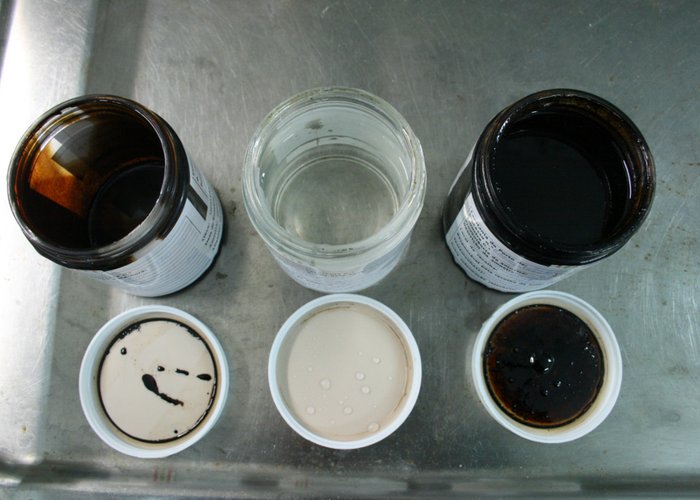
analise hidrocarbonetos
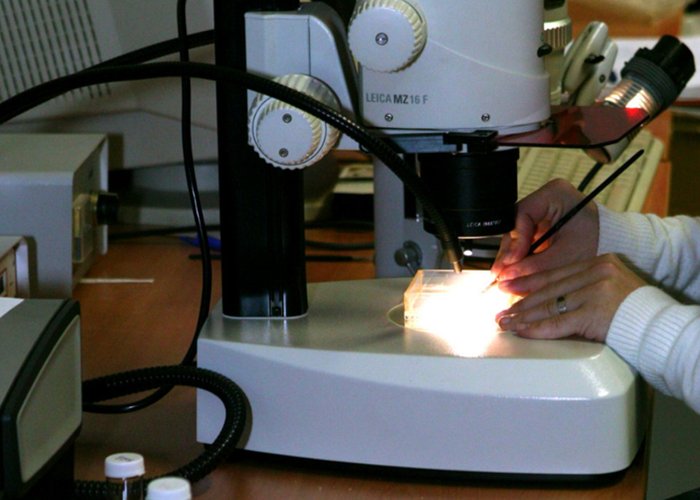
Análise composicional de sedimentos com lupa binocular
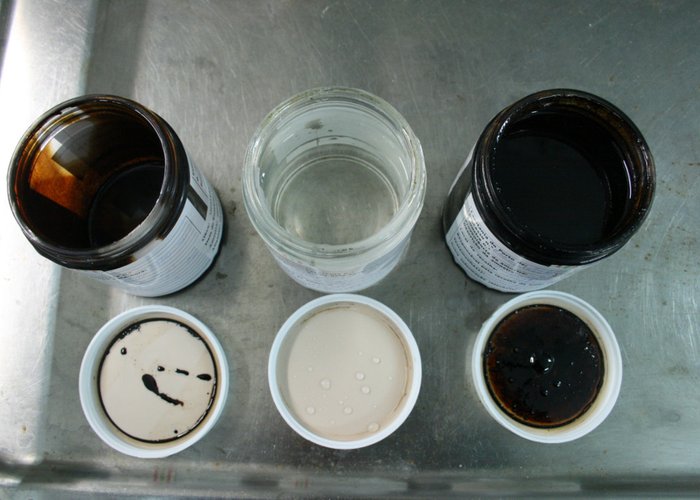
Análise de Hidrocarbonetos aromáticos polinucleares provenientes de incidentes de poluição
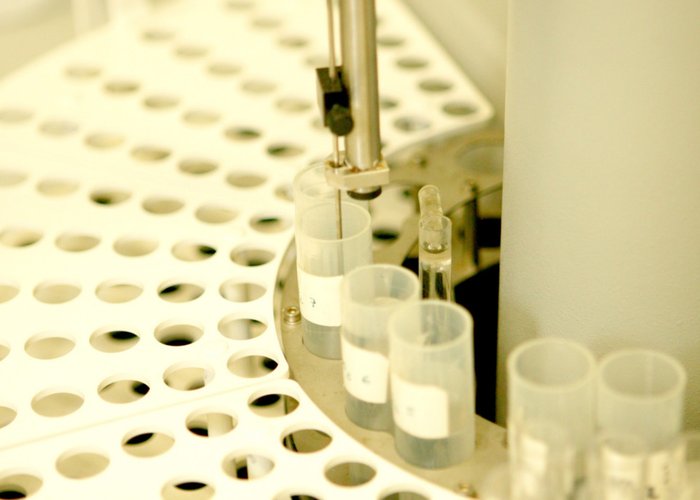
Autoanalisador de fluxo segmentado (SFA) para análise de nutrientes na matriz água.
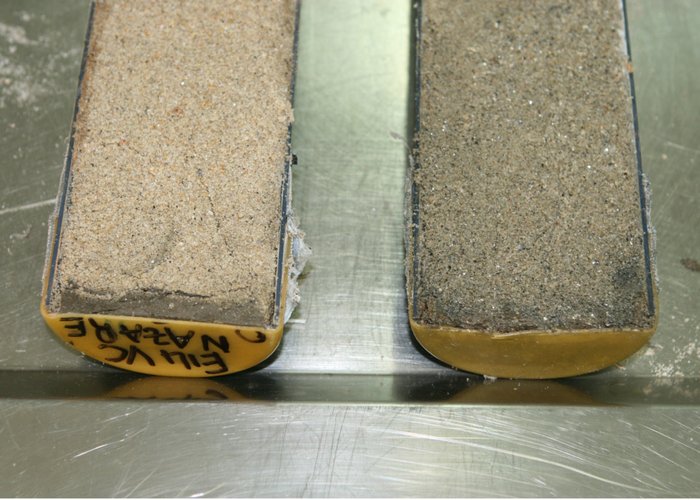
Amostra vertical da cobertura sedimentar a ser preparada para o core logging
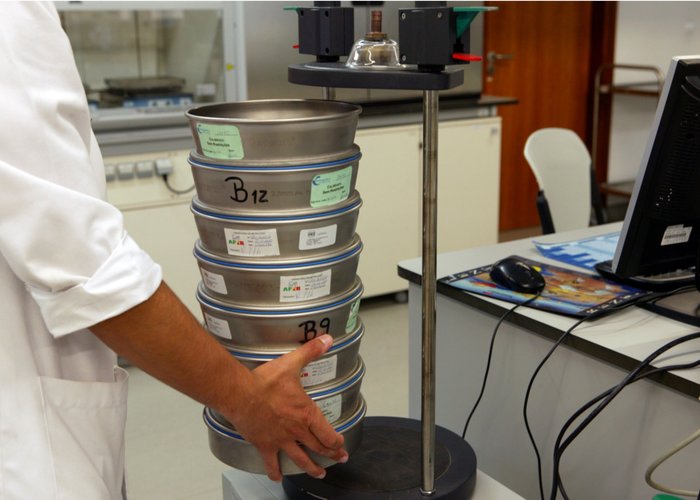
Granulometria (análise ao tamanho do grão) por peneiração
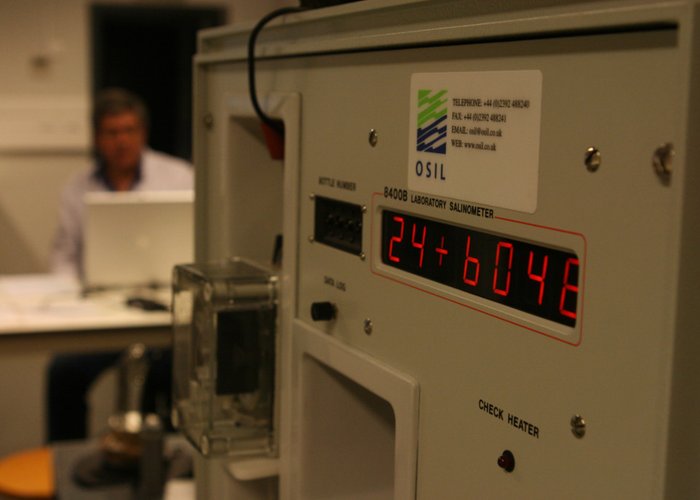
Calibração de instrumentos
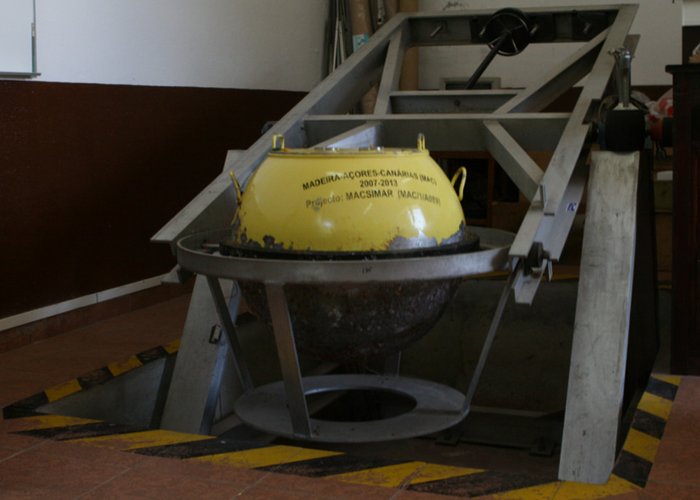
Calibração de uma boia ondógrafo





